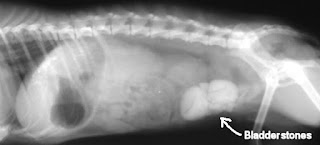Polish (UK)
 |
| polish rabbit |
Polish rabbit is one of a very small and specialized to obtain an elegant upright. Polish rabbit is very lively and energetic.
Size: Dwarf
Hair type: Short
Origins
Polish rabbit, although their name, was developed in England in the mid 19th century and was named to 'polish' their shiny coats. They are thought to have come from mixed ancestry (probably small wild rabbit crossed with Dutch and Silvers) are imported from Belgium and is often referred to as Belgium rabbit table. Rabbit meat is enhanced in the development of Poland; Although small it was brought up to the table and considered a delicacy. Poland recognized the breed in 1884, initially in a variety of white (pink or blue eyes). Colored varieties introduced in the 1950s and Poland became very popular in the United Kingdom and the United States, where it is known as Britannia Petite (renamed so as not to be confused with the kind of Polish Americans).
Appearance
Polish rabbit is one of a very small range of special weight 700 g - 1.2 kg (1 ½ - 2 ½ lbs) typical for rabbits Poland, elegant, upright pose them.
They are small, well-boned and slender rabbit, with a curved, like a rabbit body.
The head is wedge-shaped in profile with a pointed nose and ears were enough adjacent overhead, giving the appearance of a warning. Poland has a smooth coat is short, fine hair.
Colour
- White (pink or blue eyes)
- Black
- Blue
- Brown
- Purple
- Sable
- Smoke Pearl
- Agouti
- Agouti Red
- Opal
- lynx
- chinchilla
- Squirrel
- Tan
- Fox
- Tortoiseshell
- Orange
- Fawn
- Steel
- Himalayan
Temperaments
Polish rabbit is very lively and energetic. Despite its small size, they require a lot of space because they are almost constantly active. Polish rabbit can run very fast, jump high and really enjoyed the freedom to race around. They are intelligent and curious and like climbing and surfing; regular exercise is very important to prevent boredom.
Polish rabbits are not good with children. They do not like to be hugged, preferring to be on the move and are too small and fragile for young children to handle safely.
Polish rabbit should get used to address early and tender age, understanding approach is essential. They can be unforgiving of any rough treatment and bad experience can leave them very wary or even aggressive toward humans.
The Polish can be lively and entertaining for rabbit owners who are more experienced.
Special requirements
Select a rabbit with a good temperament, from the leading breeders or rescue centers.








